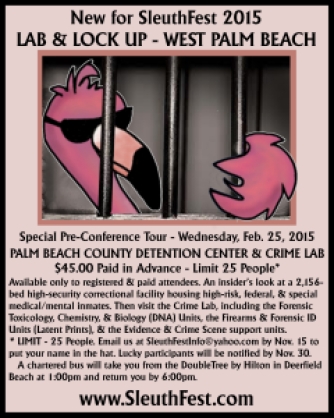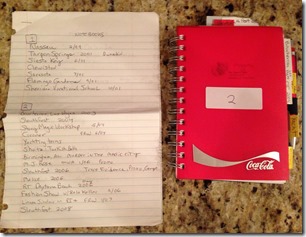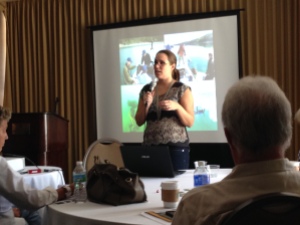How to Write Short Fiction—and Why Your Readers Think You Should!
Joanna Campbell Slan
 More and more authors are discovering the power of short fiction to market and promote their work. I’m certainly one of them. Several years ago, I promised my readers that I would write a short story a month in the run-up of the release of my next Kiki Lowenstein mystery book. Folks loved the pieces, my sales benefited, and I learned a lot in the process.
More and more authors are discovering the power of short fiction to market and promote their work. I’m certainly one of them. Several years ago, I promised my readers that I would write a short story a month in the run-up of the release of my next Kiki Lowenstein mystery book. Folks loved the pieces, my sales benefited, and I learned a lot in the process.
Guidelines for Writing Short Fiction
1. Concentrate on “one.” In my short stories, I typically write about one main character, one big problem, one setting, and one span of time.
2. Set it up fast. When they’re reading a short story, readers want to settle in quickly. Therefore, I try to work the “who, what, when, where and why” into my first paragraph. That gets my readers engaged as we explore the remaining question, “Whodunit?”
3. Craft your opening images so that they both paint a picture and set a mood for the reader. Promise your reader action and conflict from the get-go. Here’s an example: “The snow was busy blanketing our spirea bushes with a gentle white coverlet, while my mother slammed around a pot on the stove. At thirteen, I’m too old for hot chocolate, but my younger sisters, Eve and Edith, love it. Mom’s usually even-tempered when she cooks, but on this particular day, Mitt Romney had decided he wouldn’t make his third run for President. That made Mom mad. Hopping mad.”
4. Grab the reader fast. Your opening sentence should be a real show-stopper. Think of it as a baited hook that you’ll toss out into the ocean. Here’s an example, “If Mitt Romney had done his patriotic duty to our country, my mother wouldn’t be in jail today.”
5. Tell your reader the story, AFTER you tell it to yourself. It’s easy to get locked into a chronological narrative when we’re telling ourselves a story as we write it. As a result, we don’t always tell the most entertaining tale we could. Before you start writing, make a list of the things that must happen in the story and put them in chronological order. Order your information so that it makes the most impact.
6. Use this formula to help you get started: “First (inciting incident) happened to (character) and then that’s how (action started), and so (fill in the blank/more action) until (a conclusion is reached).” Example: “First Mom heard on the news that Romney wasn’t running, and that’s how she discovered that Dad wasn’t really volunteering down at Romney headquarters like he said he was, and so she followed him, and discovered he was having an affair with…a registered Democrat!” Once you encapsulate your entire short story in a sentence, you can charge ahead with confidence.
7. End with a bang! Whenever possible, I like to end my short fiction with a pithy observation or an ironic comment. The reader should feel a sense of (twisted) satisfaction. For example, “If she hadn’t dropped her ‘Mitt Romney for President’ button at the scene of the crime, Mom would have gotten away with murder. As they slapped the handcuffs on her and walked her toward the waiting police car, she yelled back at us, “See? None of this would have happened if we’d elected a good Republican into the White House!”
Do I break these rules? All the time. But I’ve developed my list as a useful template for pointing me in the right direction, even if I do wander off the suggested path.
Is it worth the time and effort? My short stories have proven to be extremely useful for keeping readers engaged between my books. I like to use the short format to expand on my characters, or to write about a situation that doesn’t warrant being explored in a full length book. You can see how this works in my Kiki Lowenstein Short Story Anthology #2. It’s only 99 cents. In particular, you might want look at the reader reviews about that particular anthology. Their comments have encouraged me to keep offering fiction in this short format.
Now it’s your turn. I’d love to hear what you’ve learned about writing short fiction or any questions you might have.
Joanna
P.S. In case the link doesn’t work, here’s the link to the anthology: http://www.amazon.com/Lowenstein-Anthology-Volume-Scrap-N-Craft-Mystery-ebook/dp/B00BQ2ITVI/ref=pd_sim_kstore_3?ie=UTF8&refRID=1MT1PG8YM2VPBP7MHCEA
About the Author
Joanna Campbell Slan is a national-bestselling and award-winning author of twenty-eight books, including three mystery series. Her newest book—Shotgun, Wedding, Bells—is now available for pre-order on Amazon. When you buy Shotgun, Wedding, Bells (Release date Feb. 14, 2015), you automatically get Tear Down and Die (Book #1 in the Cara Mia Delgatto Mystery Series/86 five-star reviews) absolutely FREE. Here’s that link: http://www.amazon.com/Shotgun-Wedding-Lowenstein-Scrap-N-Craft-Mystery-ebook/dp/B00SURBH7A/ref=sr_1_1?s=digital-text&ie=UTF8&qid=1423518318&sr=1-1&keywords=Kiki+Lowenstein
Book Blurb for Shotgun, Wedding, Bells 
A very pregnant Kiki Lowenstein and her fiancé Detective Chad Detweiler are trying to race the stork to the altar. But their vows are interrupted by a shoot-out. With the help of her nanny, Bronwyn Macavity, Kiki vows to track down the man who ruined her wedding and put her family at risk. Even a big belly bump won’t stop this intrepid amateur sleuth! http://www.amazon.com/Shotgun-Wedding-Lowenstein-Scrap-N-Craft-Mystery-ebook/dp/B00SURBH7A/ref=sr_1_1?s=digital-text&ie=UTF8&qid=1423518318&sr=1-1&keywords=Kiki+Lowenstein
Where to find Joanna
Joanna shares excerpts, tips and craft tutorials on her Blog: http://www.joannaslan.blogspot.com
Pinterest: http://www.pinterest.com/joannaslan
Facebook: http://www.Facebook.com/JoannaSlan
Website: http://www.joannaslan.com
Get a FREE e-book from Joanna
For a free sample of Joanna’s work, send an email to her assistant, Sally Lippert at [email protected] and request your copy of Ink, Red, Dead (Book #3 in the Kiki Lowenstein Mystery Series).

















